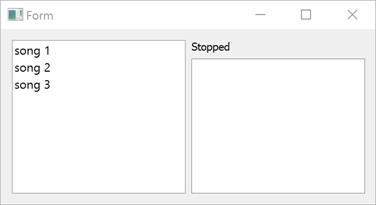Qt SCXML Media Player Example (Static)¶
A widget-based application that sends data to and receives it from a compiled ECMAScript data model.
Media Player Example (Static) demonstrates how to access data from an ECMAScript data model that is compiled into a C++ class.
The UI is created using Qt Widgets.
Running the Example¶
To run the example from Qt Creator , open the Welcome mode and select the example from Examples. For more information, visit Building and Running an Example.
Using the ECMAScript Data Model¶
We specify the data model as a value of the datamodel attribute of the <scxml> element in mediaplayer-common/mediaplayer.scxml:
Compiling the State Machine¶
We link against the Qt SCXML module by adding the following lines to the example’s build files.
.pro*
when using qmake:¶
We then specify the state machine to compile:
CMakeLists.txt*
when using cmake:¶
We then specify the state machine to compile:
The statechart directives STATECHARTS or qt6_add_statecharts invoke the Qt SCXML Compiler, qscxmlc, which is run automatically to generate a header and a source file, which are then added appropriately for compilation.
Instantiating the State Machine¶
We instantiate the generated MediaPlayerStateMachine class in mediaplayer-widgets-static.cpp:
Connecting to States¶
The media player state machine will send out events when users tap a control and when playback starts or stops, as specified in the SCXML file:
To be notified when a state machine sends out an event, we connect to the corresponding signals:
© 2022 The Qt Company Ltd. Documentation contributions included herein are the copyrights of their respective owners. The documentation provided herein is licensed under the terms of the GNU Free Documentation License version 1.3 as published by the Free Software Foundation. Qt and respective logos are trademarks of The Qt Company Ltd. in Finland and/or other countries worldwide. All other trademarks are property of their respective owners.

